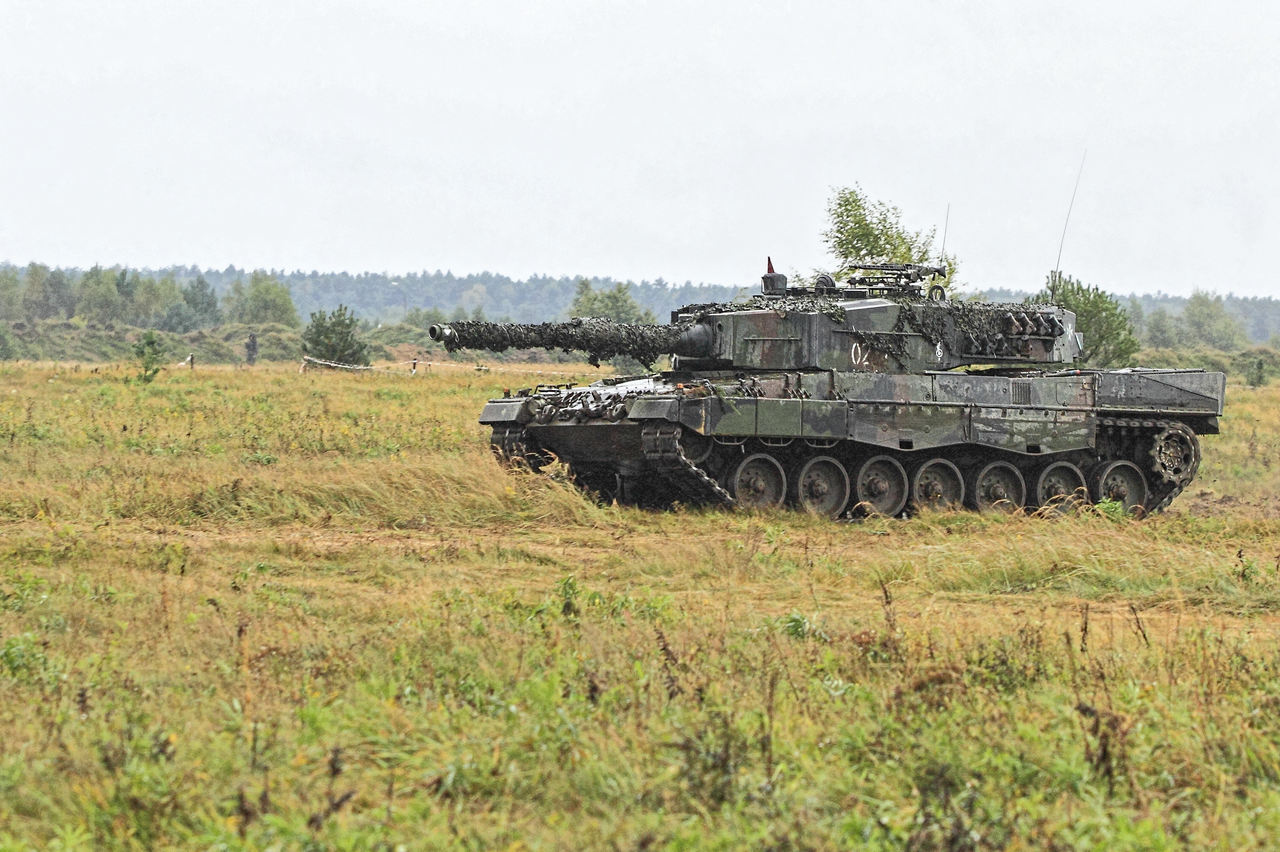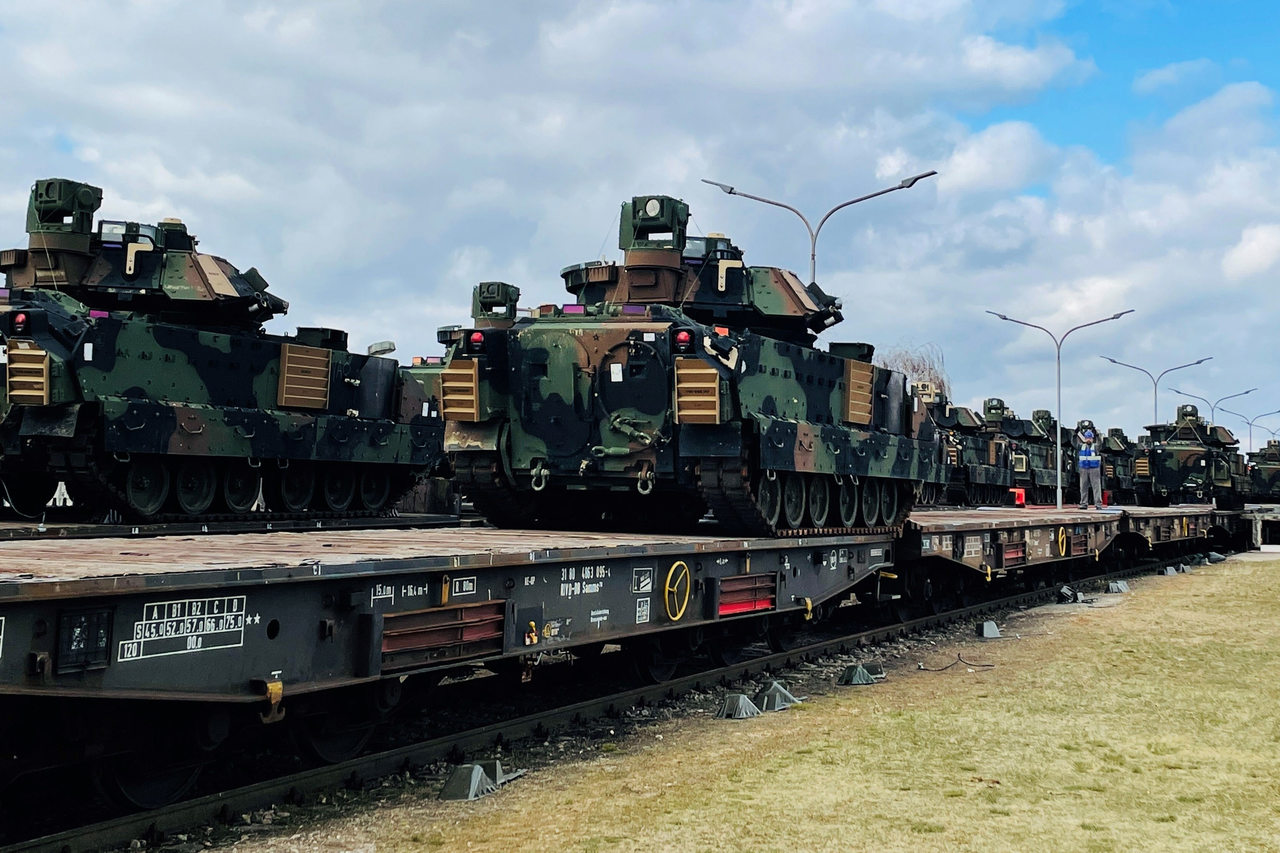Leopard and Abrams Tanks to be Delivered to Ukraine
On 25 January, Germany announced it will send Leopard 2 tanks to Ukraine and, as their manufacturer, allow other countries to do the same. Shortly after, the U.S. pledged to deliver Abrams tanks to Ukraine. These decisions conclude weeks of intensified discussions during which Germany was resisting Allied calls to provide Ukraine with Leopards while the U.S. was sceptical about sending the Abrams.
 Slawomir Olzacki / Forum
Slawomir Olzacki / Forum
What tanks will Ukraine receive?
A group of countries is to provide Ukraine with two battalions of Leopard 2 tanks (60-80 vehicles) and train their crews beforehand. According to the German government, the first battalion will be composed of newer versions of the tank and arrive in Ukraine in three months. The second battalion with Leopard 2s in an older version is to be delivered later. A full list of donors was not immediately available. Fourteen tanks each will be handed over by Germany and Poland, which was the first country to declare (on 11 January) readiness to send Leopard 2 tanks to Ukraine. Shortly after the German decision, Canada, Finland, Norway, and Spain also confirmed they will deliver an unspecified number of these tanks as well. Germany will review providing older Leopard 1 tanks. Moreover, even before the latest meeting of the Ukraine Defense Contact Group, which took place on 20 January, the UK committed to sending 14 Challenger 2 tanks to Ukraine.
The U.S. will give the country 31 Abrams tanks. Unlike the Leopards, these U.S. tanks must still be procured and will arrive in Ukraine later in the year, possibly even next year. Additionally, Ukraine is still receiving tanks of Soviet origin, although it is increasingly difficult to obtain spare parts for them. The next batch of T-72-family tanks (60) will be delivered by the end of March by Poland (which so far has provided the vast majority of these tanks, at least 260). An additional 90 will be transferred by Czechia in cooperation with the Netherlands and the U.S., while Slovakia may send another 30.
Why did the U.S. change its position on sending Abrams tanks?
The German and U.S. decisions reflect a compromise between them, although neither government directly admitted it in public, only noting their actions are coordinated. The main U.S. goals were to persuade Germany to agree to the transfer of Leopard 2s to Ukraine and to avoid division in NATO. In recent days, German Chancellor Olaf Scholz made the delivery of Leopards dependent upon the U.S. sending Ukraine Abrams tanks as well. But the Pentagon was reluctant to do so, with officials arguing that it would be more difficult to train Abrams crews and provide maintenance for these vehicles (for example, they pointed to Abrams’ greater fuel consumption or argued that servicing Leopards will be easier because more than a dozen countries in Europe have them). They also stressed that Ukraine needs additional tanks as soon as possible to repel an expected Russian offensive in the spring and to liberate further territory. In announcing the decision about sending the Abrams, President Joe Biden repeated many of these arguments to explain why it will take a lot of time to prepare Ukraine to receive and use the Abrams, and underscored the importance of the earlier delivery of the Leopards.
What was the importance of the U.S. decision for Germany?
Chancellor Scholz opposed the delivery of tanks to Ukraine for months. He justified his resistance by warning that such a move might lead to war between Russia and NATO and emphasised the need to cooperate closely with allies. In this context, Scholz’s insistence on the U.S. delivering its tanks as well might be interpreted as a desire to lessen the risk of Russian escalation against Germany. Such concerns were unfounded as Russia did not escalate against NATO after tanks were sent by Poland and other countries, nor following deliveries of other weapons (also by Germany). As a member of the Alliance, Germany is covered by U.S. mutual defence commitments anyway. It is possible that Biden’s decision made it easier for Scholz to overcome the resistance of some members of his own party who claimed that tank deliveries would prolong the war and make peace talks with Russia more difficult.
What do the decisions on the tanks mean for the war?
The decisions to send Abrams and Leopard tanks are of major political importance, especially in connection with recent decisions to increase the supply of other equipment. They demonstrate that western countries will continue to support Ukraine despite their different views on some issues. Developments related to these decisions confirm that active U.S. engagement is indispensable in mobilising some allies and building consensus.
That a number of countries is sending Western tanks is also important symbolically, as it breaks another taboo on the types of equipment that can be provided to Ukraine. It is possible that further discussions will explore deliveries of combat aircraft and long-range missiles, both seen earlier by many countries, including the U.S., as potentially escalatory with Russia.
The recently announced transfers will strengthen the armed forces of Ukraine but do not guarantee a victory. In total, Ukraine is to receive more than 200 additional tanks, maybe even up to 300. The latter is the number that the Ukrainian military set in December as necessary to liberate all territory taken by Russia in 2022. However, just 100-130 of these will be better-quality Western tanks, and deliveries of Abrams and some of the Leopards will take many months. In effect, it will be necessary to replace the losses and provide additional tanks and other assistance to Ukraine, also in the long term. Combined with the need for NATO countries to modernise their own forces and replenish their stocks of equipment, this calls for increasing the arms production capacity of these states.



.png)
